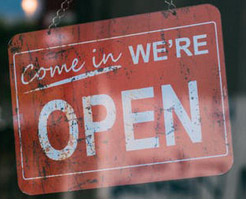All about champagne
- What is champagne?
- The Champagne region
- How is champagne produced?
- Uncorking and serving Champagne
- Champagne storage
- The most popular champagne cocktails
Information & advice
Our customer service team is available for you on Monday through Friday from 8:30 am to 5:00 pm and on Saturday from 8:30 am to 1:00 pm.
020-408 48 51
What is champagne?

Champagne is a sparkling wine made from grapes grown, harvested, and produced in the Champagne region. Sparkling wine can only be called 'Champagne' if it originates from the Champagne region. The grape varieties used to make champagne each have their own character and taste, influenced by the climate and soil in which they grow. Most of us know champagne as a festive bubbly drink, and while it certainly is, champagne is more than just that!
The history of champagne

The use of the name 'Champagne'
- The sparkling wine comes from the Champagne region.
- The sparkling wine was prepared according to the Méthode Champenoise.
- It is made using a combination of Chardonnay, Pinot Noir, Pinot Meunier, Pinot Blanc, Arbane, and/or the Petit Meslier grape varieties.
- The bottles have undergone cellar aging for a minimum of 15 months.
Grape varieties used for Champagne
- Chardonnay
- Pinot Noir
- Pinot Meunier

Types of Champagne
Champagnes can be categorized into the following types of champagne:
- Brut: has a dosage of less than 15 grams of sugar per liter.
- Extra sec: has a dosage of more than 12 and less than 20 grams of sugar per liter.
- Sec: has a dosage of more than 17 and less than 35 grams of sugar per liter.
- Demi-Sec: has a dosage of more than 35 and less than 50 grams of sugar per liter.
- Doux: has a dosage of more than 50 grams of sugar per liter.
Brut champagnes are the most consumed champagnes, constituting a staggering 95% of all consumed champagnes. For those who enjoy a slightly sweet taste, Demi-Sec is an excellent choice. Doux champagne, being very sweet, is rarely produced nowadays.

How is Champagne Produced?
You've already learned a bit about the history and origins of champagne. Champagne is famous for its sparkling bubbles. The production process consists of several steps. How is champagne made, and how does it acquire its bubbles? Champagne houses adhere to the 'Méthode Champenoise,' a technique exclusive to champagne producers in the Champagne region. The following steps are undertaken to transform grapes into champagne:
Méthode Champenoise
- Harvesting the grapes
- Pressing the grapes
- First fermentation
- Blending (assemblage)
- Second fermentation
- Aging process
- Remuage
- Dégorgement
- Adding sugar
- Corking

Uncorking and Serving Champagne
Opening champagne might seem a bit tricky, but if you practice a little, you'll get the hang of it! Start with Uncorking champagne by gently loosening the wire cage. Make sure to hold the cork firmly, as there's a chance it might pop off due to pressure. Then, twist the bottle, not the cork! The cork will gradually pop out. Tilt a champagne glass slightly and pour the champagne in slowly—avoid pouring too hard to prevent the champagne from overflowing.
Champagne can be served in various types of glasses. While everyone knows the classic champagne flutes, champagne is also served in tulip-shaped glasses or champagne coupes. However, champagne coupes are not as commonly used nowadays because their wide shape allows the bubbles to escape quickly.
Tasting Champagne involves just four simple steps:
- Look: Is the champagne clear? What color does it have? And how intense are the bubbles?
- Listen: How do the bubbles fizz and crackle? The louder, the more carbonation the champagne has.
- Smell: Champagnes have various aromas. You can distinguish the scents by putting your nose slightly into the glass.
- Taste: After looking, listening, and smelling, you can finally taste the champagne.
Storing Champagne
- Non-vintage Champagne: up to 9 months
- Prestige Champagne: 10-15 years
- Vintage Champagne: up to 1 year
- Opened Champagne: 3-5 days
Champagne Cocktails
- Kir Royal
- French 75
- Scroppino
- Mimosa cocktail
- Bellini cocktail




